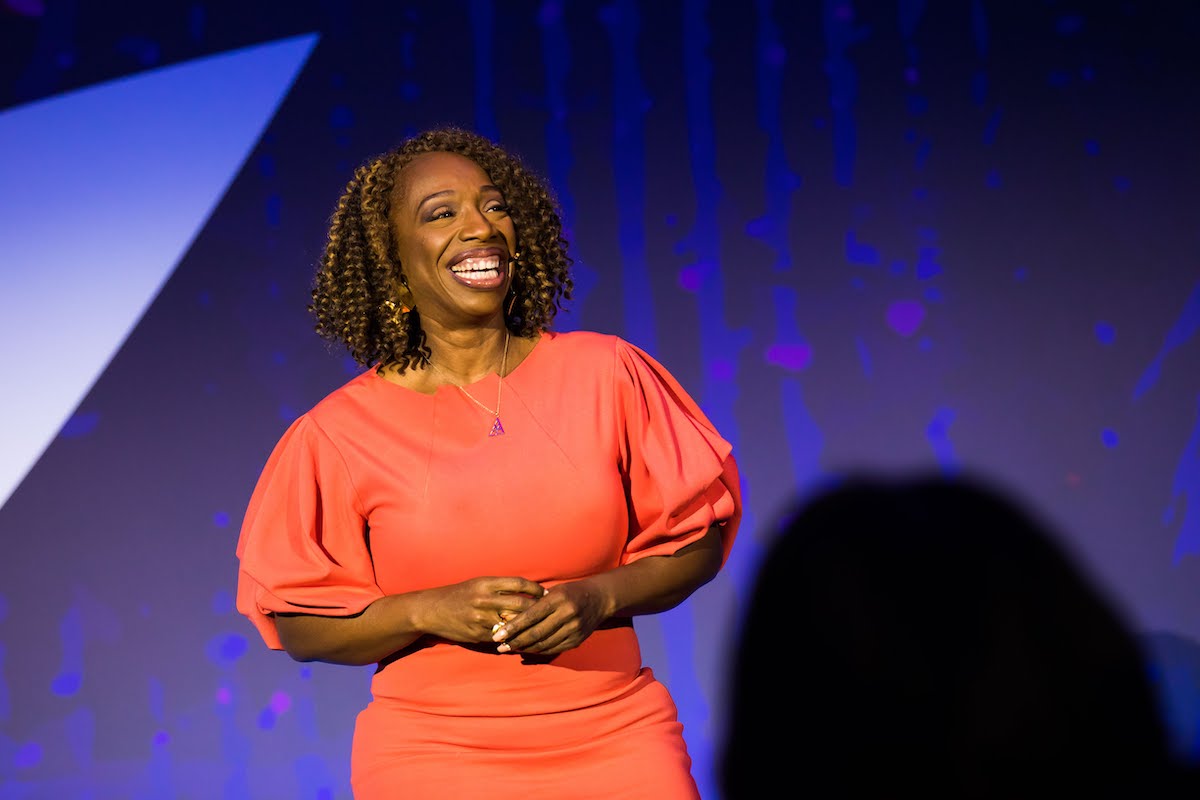Martin Luther King’s I Have a Dream, Queen Elizabeth I’s Speech to the Troops at Tilbury, and even Steve Jobs’ commencement address — these people sure knew how to start a speech.
And what about in movies? Coach D’Amato’s speech from Any Given Sunday, William Wallace’s from Braveheart, or Miranda Priestly’s from The Devil Wears Prada are just a few that straight-up give you goosebumps.
But what does it take to truly captivate your audience? Sprinkle in your message? Add in a dash of character? And then, mix in the essence?
If you’re stuck on how to start a speech, here’s where you can discover invaluable tips and insights that can help.
How to Start a Speech: The Storytelling Aspect
Storytelling is very much an integral part of any speech. And it’s one aspect that you should consider formulating first in order to hook in your audience.
Storytelling’s very much like food in the way that they bring people together with love and open arms.
Take bread, for instance. We, as a species, have been eating bread since forever ago; it’s even referred to as the “staff of life” in the Bible.
Every culture has its distinct version — from the naan in India to the pão de queijo in Brazil as well as the fougasse in France to the injera in Ethiopia, and let’s not forget the white loaf in the United States to the mantau in China. It’s a staple that can be prepared, served, and enjoyed in countless ways.
The art of storytelling
Similarly, storytelling has long been part of our DNA as a human race with each culture having its own unique approach and voice to narrate stories.
- The Native American tribes’ oral storytelling traditions are passed down from generation to generation.
- Hawaiian storytelling also includes mele (song), oli (chant), and hula (dance).
- And even in African culture, storytellers (more often referred to as griots) are the most revered people in villages. Not only did they narrate stories, but they also held the knowledge of their village’s genealogy, history, and more.
Everywhere you look, stories are being told (more than likely, over breaking bread).
In speeches, in books, in articles, on podcasts, on television, on social media (Vishen tells some amazing stories on his Instagram), in court, in religious gatherings, in business meetings, at award shows… and like food, it’s all around us.
There is no environment where a story does not elevate the experience…Stories are the bridge that connects our hearts to each other. And it allows us to find our common ground.
— Lisa Nichols, trainer of Mindvalley’s Speak and Inspire Quest
So, pour some wine (or grape juice, if you fancy), break some bread, and digest these tips to move people with your story.
Bonus: we’ve added some of Lisa’s insights from the Speak and Inspire Quest to bring out the flavor. Bon appétit!
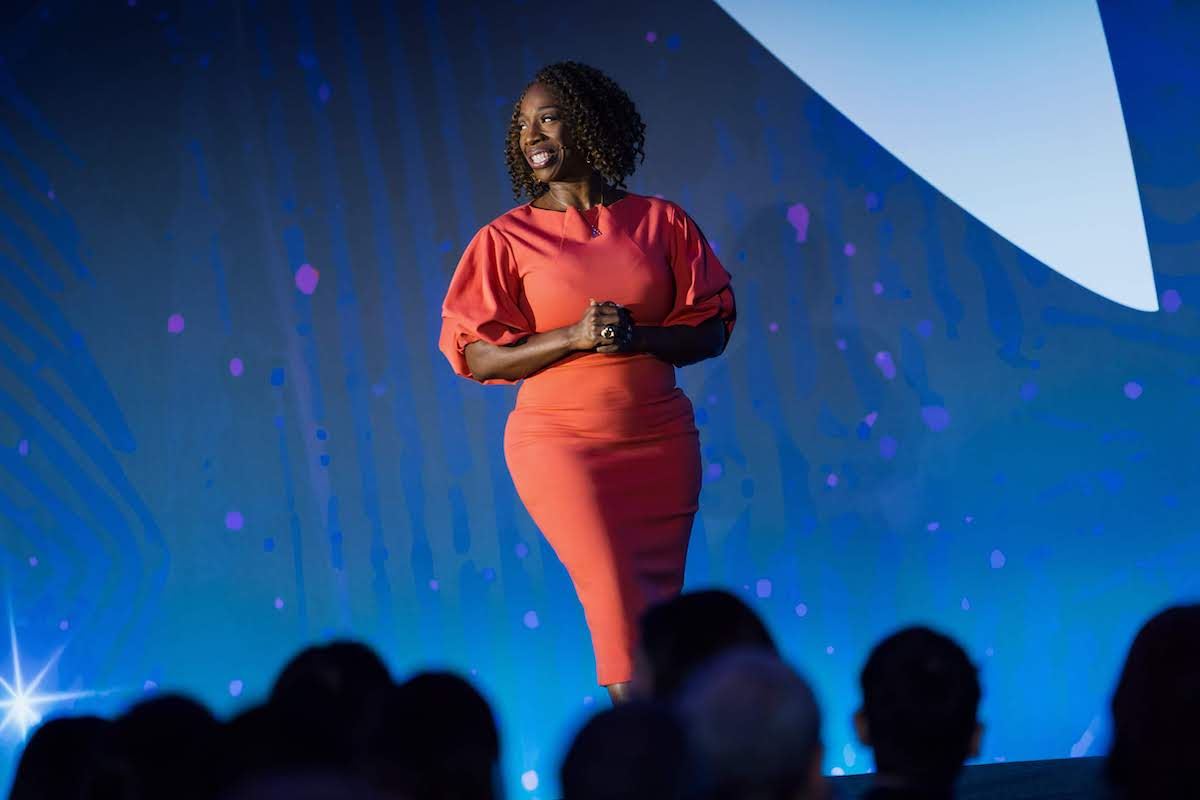
Tip #1: Sprinkle in your message
Now, let’s go back to bread.
While bread itself can come in many variations, its use can be diverse as well.
It can be used as an appetizer, like in an Italian bruschetta. It can be eaten as a main meal, like in a good ol’ American cheeseburger. Or it can even be part of a dessert, like your grandma’s famous bread pudding.
As long as you got bread, you got yourself a meal.
Likewise, as long as you got a message, you got yourself the heart and soul of your speech.
Your message is the essential point that serves as an attention-getter for your speech. Or simply put, it’s what you want your audience to remember.
Example of sprinkling in a message
Most great messages, especially ones looking to inspire, start with an ‘oomph.’ Coach D’Amato’s from Any Given Sunday is a perfect example of how to start a motivational speech:
“I don’t know what to say really. Three minutes ‘til the biggest battle of our professional lives all comes down to today. Either we heal as a team or we’re gonna crumble inch by inch, play by play ‘til we’re finished.”
Because, no matter how they’re served (be it in an amazing movie or public speaking), all great griots include messages and experiences as attention grabbers for speeches.
Insight from Lisa Nichols
Every message can have a different meaning to different people. “Content and intellectual presentations are necessary,” says Lisa. “They provide information, they provide clarity, they provide direction, they provide skillset to the listener.”
They can inspire, teach, clarify, and influence a person. In the wrong hands, however, they can also manipulate the masses (here’s looking at you, propaganda commercials).
But no one starts off as a master griot, not even the great Lisa herself. You can’t assume that if you put a bunch of ingredients in a bowl, you’re going to bake the best speech there ever was. (This isn’t exactly The Great British Bake Off.)
So, now that you’ve found your message to tell, where do you go from here? By understanding all the characteristics of presenting a great speech.
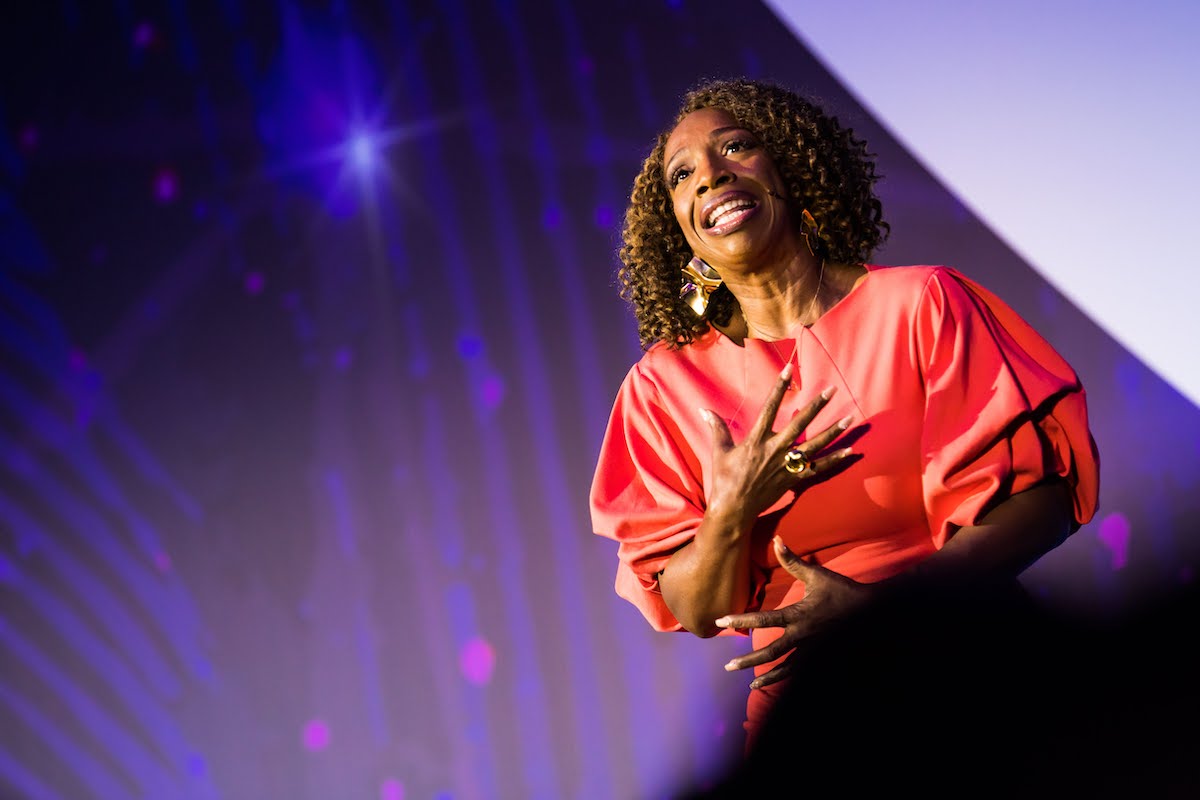
Tip #2: Add a dash of character
Every speech has a story. It can be about difficult moments in life, enlightening situations, or experiences that you had under disguise. Great stories are typically birthed in the incidents. Some happen in a moment and others, over a few years (and some might even be ongoing).
So, how do you make your story great?
Well, think in terms of food — what makes bread great? Any baker would tell you there are five elements of amazing bread: color, shape and size, crust, texture, and flavor.
Now, in terms of a speech, any griot would say that it’s more than just vocalizing your point. It’s about showing it. So, here are a few things you should keep in mind:
- Have a purpose and a clear structure of a speech
- Create a character to root for (in the case of your own story, it’ll be you)
- Appeal to the emotions
- Incorporate surprises, plot twists, and a pregnant pause
- Make it simple and focused
Example of a dash of character
Take Martin Luther King’s speech, for instance. Most people don’t remember how it starts. They do, however, recognize this famous part of it: “I have a dream…”
Why? It serves a purpose. It appeals to people’s emotions. And most importantly, it roots for a simple, relatable cause — the dream of equality for all.
MLK starts off with…
“I have a dream that one day this nation will rise up and live out the true meaning of its creed: We hold these truths to be self-evident, that all men are created equal.”
…and he goes on to add five more “I have a dream…” that serve as a powerful punch to his overall message.
Insight from Lisa Nichols
Great speeches are crafted intentionally to engage your audience through your motivations, beliefs, emotions, and actions.
In fact, a 2018 study shows that, contrary to Aristotle’s theory that the plot is the most important component of storytelling, the brain relates best to the main character, especially their thoughts and feelings. (This is perhaps why we tend to “Like” social media posts that relay personal stories.)
So now, with your ingredients at hand, you’re ready to show and tell. But there’s one more thing to add into the mix to deliver your story — the essence.
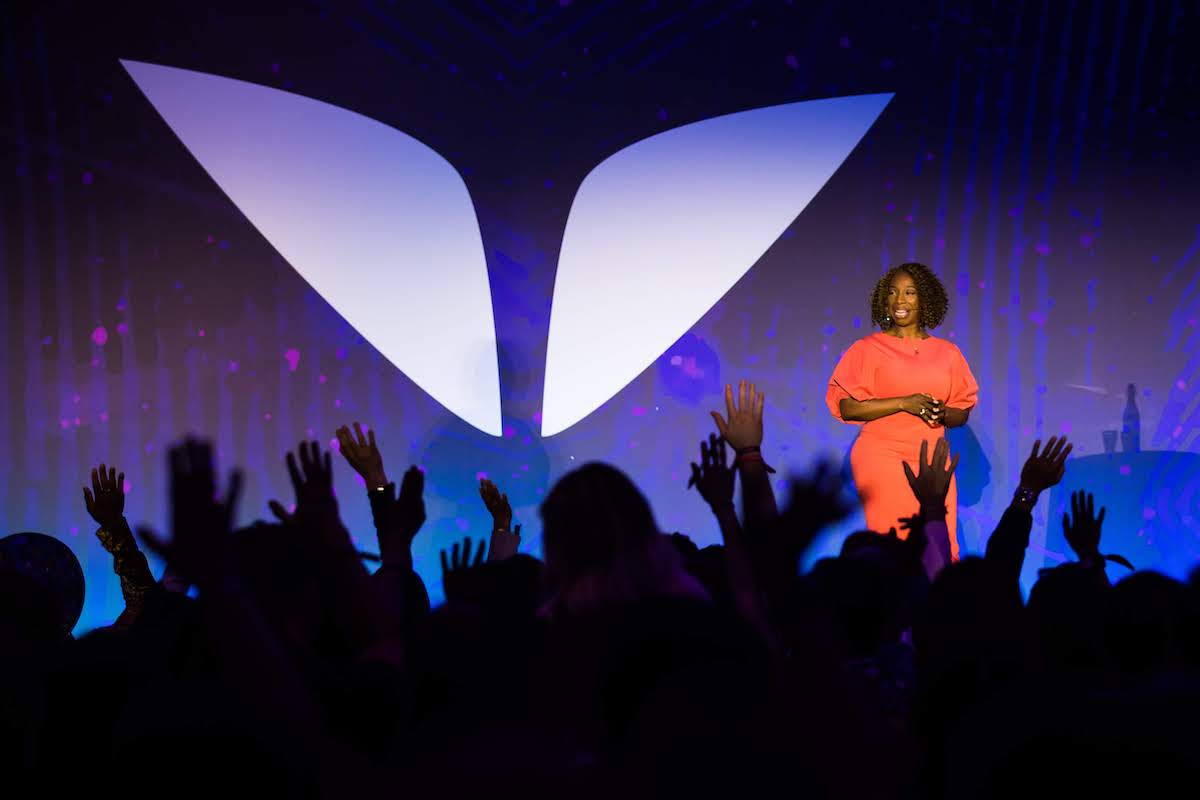
Tip #3: Mix in the essence
The phrase “cook with love” means much more than bending over backward to provide bread on the table. It involves connection to others, nurturing, and mindfulness.
Remember your mama’s cooking — how she made it taste so good, it invokes memories even years later? Because it was cooked with love.
By adding the ingredient of love into anything and everything you do, whether it’s cooking or storytelling, it affects your life positively. And like a ripple in water, it spreads those good vibes onto those around you.
“How we tell our stories controls our mood, self-image, and the influence we have on others. Our stories can also dictate our future paths and successes,” says Pamela Rutledge, author of Everything is Story: Telling Stories and Positive Psychology.
“Therefore, understanding storytelling is not only key to how we feel about ourselves and how we interact with others, but it gives us valuable tools we can use to make change.”
We find our humanity in a story, but it takes time and practice to master it.
Example of the essence
Let’s take a look at Steve Jobs’ commencement address at Stanford in 2005. It’s one of the best examples of how to start a speech, being one of the most-watched commencement speeches of all time and amassing more than 40 million views to date.
In it, he gets straight to the essence:
“Truth be told I never graduated from college and this is the closest I’ve ever gotten to a college graduation. Today I want to tell you three stories from my life. That’s it. No big deal. Just three stories.”
And in doing so, he opens himself up to the audience in vulnerability and love.
Insight from Lisa Nichols
If you’re wondering how to start off a speech with the power of your unique, authentic voice, Lisa explains that it starts with you showing up for yourself. After all, how can you make the bread when you don’t have the most important ingredient of all — self-love?
If you’re not showing up to make the effort, then “you’re probably not showing up for yourself in other areas of your life.”
“Anything that’s not working for you, I want you to do a pattern interrupt,” she says. “Yes, it might be difficult, but you’re bigger than your circumstances. You have everything in you to rise above a challenging moment and come through.”
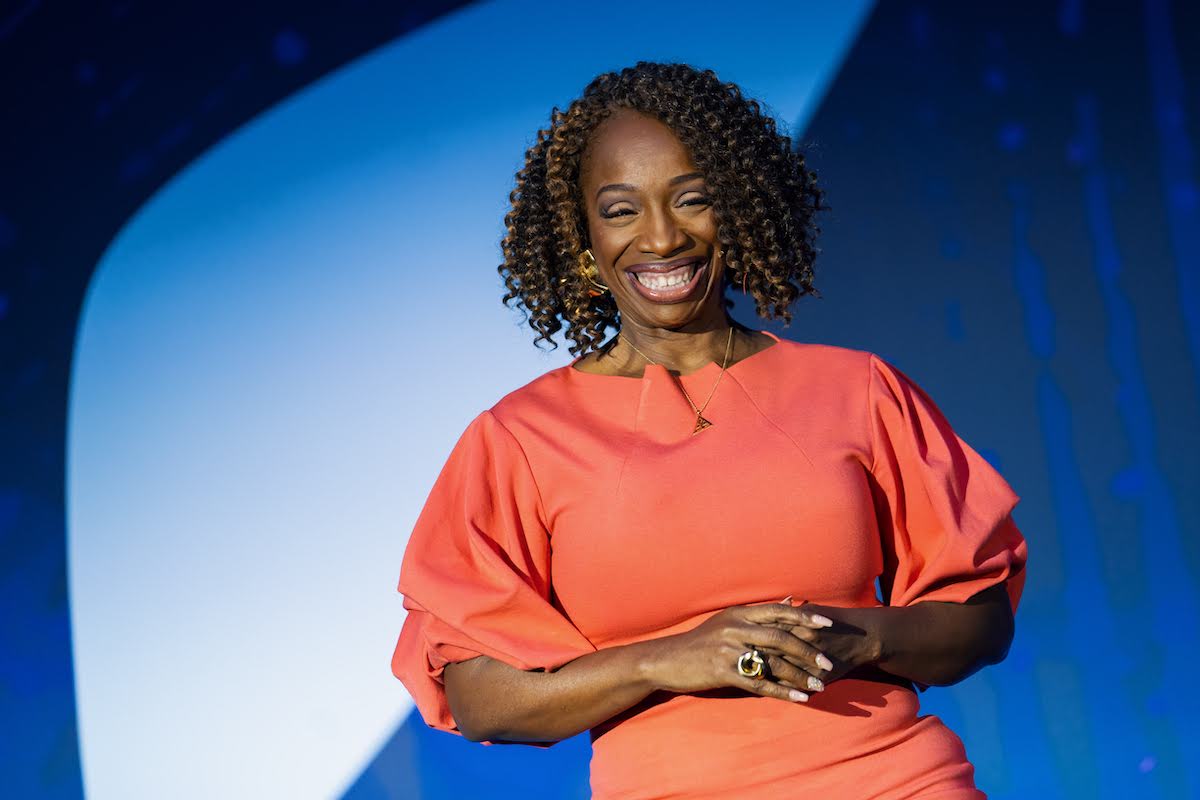
We Recommend the ‘Lisa Nichols’ Special
Great storytellers are as unique as their stories. Lisa Nichols is no exception.
A self-proclaimed ‘sister-friend in possibility and in prosperity,’ we can all take a cue from this light of inspiration.
Her story of how she went from a broke and broken single mom to the CEO of her company, Motivating the Masses, and a New York Times bestselling author has garnered the likes of Steve Harvey and Oprah Winfrey. She has also taken to the stage at several Mindvalley A-Fests as well as the Mindvalley Summit.
You see, Lisa’s Speak and Inspire Quest (as well as its free Masterclass) is not just about being a great speaker and storyteller. It’s about finding the real you. It’s about finding the heart and soul of your voice so that you can express the stories of where you came from, where you’re going, and what made you who you are.
In turn, it will inspire and empower other people to do the same. And like a dinner party (where there’s bread, of course), when people are brought together for the sake of goodness, there’s an energy of love, light, and happiness.
That is the power of a griot. And, should you allow it, that is the power of your speech.
